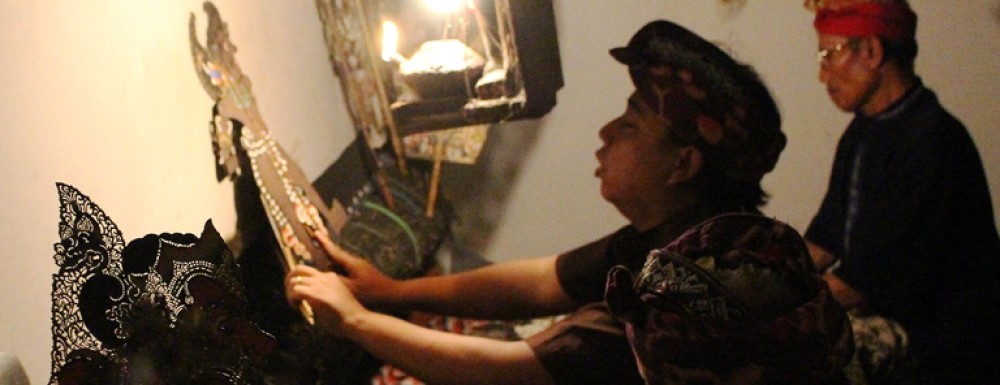Another draft chapter from my guide to Lempad’s Art and Buildings in Bali
Getting there:
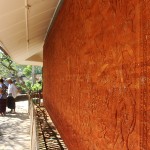
Lempad’s wall at the abandoned cultural centre in Bedulu, Bali.
If you are staying in Ubud, go south down Jl Hanoman or Jl Cok Gde Rai for about two kilometres until you reach Jl Made Lebah/Jl Raya Teges and turn left.Travel east along a road that then changes its name from Jalan Raya Goa Gajah to Jalan Raya Bedulu and then Jalan Pura Samuan Tiga. Pass through an ornately carved stone gateway and travel along a dual carriageway to a paved car park. Pura Samuan Tiga temple is on the left and Lempad’s art is part of the neglected cultural centre on the right, just before the road narrows. As all of Lempad’s art is on the outside of this building there is no need to go inside and consequently no entry fee.
Several excellent but neglected examples of Lempad’s art can be seen at this now abandoned cultural centre. Lempad was commissioned to carve a bas relief into clay bricks for this Suharto-era building used by visiting politicians to address meetings. It has been reproduced in full colour in Gaspar, Casannovas and Couteau’s book “Lempad”.
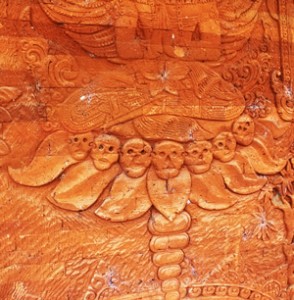
Detail from Lempad’s wall at the abandoned Bedulu cultural centre in Bali.
Lempad is said to have completed the wall in just two months with the help of his nephew I Gusti Nyoman Sudara.
There are also several Lempad bas reliefs set into the low walls fronting the street and on top of the hill you can see a ruined kul-kul tower which is another Lempad work.
Cultural tips:
The scenes in the brick carving are from the old Javanese Buddhist story Kakawin Sutasoma. Sukarno’s nation-building slogan “Unity in Diversity” came from this story which may have led it being chosen for a government building.
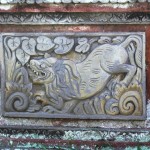
One of Lempad’s small bas reliefs set into the low outside walls of the Bedulu cultural centre, Bali.
A kul-kul is a log suspended in a tower that is used to sound various alarms by striking it in various well-known rhythms. Like a European church bell it can be heard from a long way and is used to rally a neighbourhood to help put out a fire, to catch a thief, to toll the death of an important village member and so on.
Sukarno was Indonesia’s flamboyant first president who owed much of his success to encouraging diverse peoples to think of themselves as “Indonesians”. He may have invented the word “Indonesia”. His successor Suharto used various strategies to reassure Indonesia’s citizens that Sukarno’s vision and legacy was still alive.
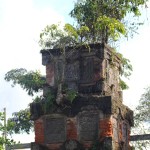
Trees grow out of Lempad’s ruined kul-kul tower above Bedulu cultural centre, Bali.
